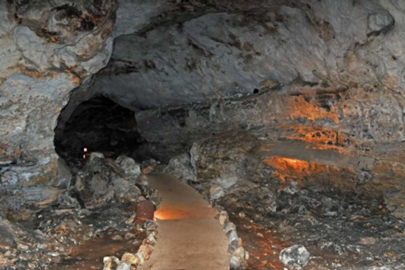Caves are central to the cosmologies of many world cultures , used by humans from the dawn of time. They are associated with powerful natural forces and are believed to be dwelling places for benevolent and malevolent deities, protectors and disruptors of communities and individuals’ lives.
An example of this is the Balankanché Cave , located 2.5 miles (3.9 kilometers) southwest of the ancient metropolis of Chichén Itzá , Yabnal in ancient Maya, near the town of Pisté. The cave’s proximity to this major pre-Columbian site underlines the fact that Balankanchè was an integral part of the theocratic city for religious rituals and ceremonies.
The cave was called the “ Throne of the Tiger Priest ” by E. Willis Andrews, in his 1970 archaeological field report. Its significance can be fully understood in contrast to the monumental secular site above ground. The interaction between the surface elements and those of the cave, give us an unusual light on the life of Chichén Itzá.
Read more HERE
Ask me anything
Explore related questions





